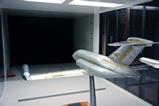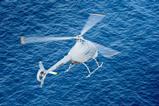CFM International in not planning an immediate upgrade of its Leap-series engines as a response to the introduction by Pratt & Whitney of the GTF Advantage, which promises to bring better fuel burn and durability to its PW1100G powerplant.
P&W expects the new GTF Advantage to enter service in 2024, delivering a 1% fuel-burn improvement over the current-generation PW1100G that powers Airbus A320neo-familiy aircraft, alongside enhanced durability and high-altitude take-off performance.

But Olivier Andries, chief executive of Safran, one half of the CFM joint venture alongside GE Aerospace, says the company does not “feel threatened” by its rival, pointing to the Leap-1A’s win rate on the Neo last year of above 75%.
Andries, presenting Safran’s full-year results on 15 February, ascribed that performance in part to the troubles currently being experienced by P&W, which has mandated inspections on thousands of engines to deal with a manufacturing fault, causing significant disruption for operators.
However, he adds: “We can expect our competitor will recover at some stage but we don’t feel under pressure on the competitiveness of our engine compared with our competitor’s.”
Andries says there is “no big upgrade package to be expected soon on the Leap”, with the immediate focus instead meeting the ramp-up requirements of both Airbus and Boeing and “bringing to market our durability kit”.
The latter enhancement is designed to address premature wear on components, including fuel nozzles and high-pressure turbine blades, in Leap engines when operating in hot and dusty conditions.
CFM last year delivered 1,570 Leap engines, up by 38%, or 434 units, against 1,136 in 2022; Andries describes the increased production as a “significant step up”.
Safran anticipates output rising again this year in the range of 20-25%, which would yield a total of 1,884-1,962 engines.
Orders for more than 2,500 Leap powerplants were booked in 2023, giving a backlog of 10,675 units.
Safran saw group revenues rise by 23% in 2023, growing to €23.1 billion ($24.9 billion) from €19 billion a year earlier and generating operating profit of €3.1 billion against €2.4 billion in 2022.
Revenue from its propulsion segment – which includes the contribution from CFM – rose to €11.8 billion from €9.5 billion a year earlier. Profit for the division was €2.3 billion, up from 2022’s figure of €1.5 billion.
There was even good news from the under-pressure aircraft interiors unit, which finally saw both the IFE and seating businesses hit operating break-even, respectively for the full-year and the final quarter.
Pascal Bantegnie, Safran chief financial officer, attributes the turnaround to a “notable improvements in engineering processes and production costs” which were “starting to bear fruit”.
But with the division still loss-making in 2023 – and €544 million, the loss was larger than the €486 million figure recorded in 2022 — the goal for this year, he says, “is to be back in the black”. Sales grew modestly from €1.9 billion to €2.4 billion.
Revenues for the aircraft equipment unit – which makes products including nacelles, wheels and landing gears – hit €8.8 billion, up from €7.5 billion a year earlier, while profit stood at €979 million, against €914 million.
Safran is guiding for group revenues of around €27.4 billion in 2024 and operating income close to €4 billion.































